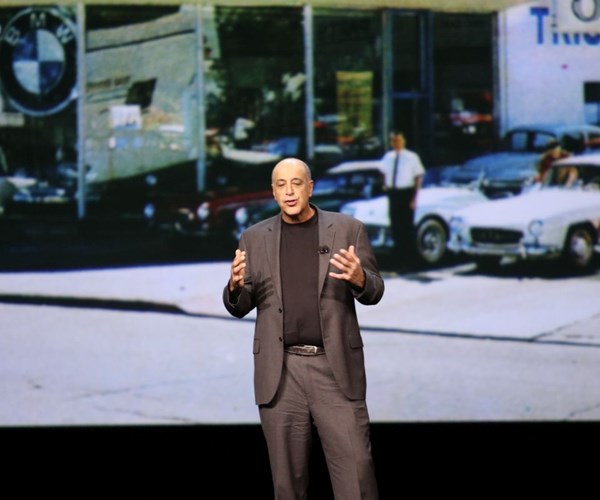Carl Bass Comments at Recent Autodesk Event
The software company CEO spoke at Autodesk University on topics including challenges to the automotive industry and the coming of generative design.

Autodesk hosted its most recent Autodesk University event this month in Las Vegas. Carl Bass, the company’s president and CEO, touched on automotive manufacturing in his opening keynote. Here are three challenges he says are transforming or promising to transform the auto industry:
- Autonomous vehicles—the hope of perfecting cars or trucks requiring no driver.
- Car sharing—meaning services providing alternatives to owning a personal car.
- Electric powertrains—and the likelihood of increased demand for these powertrains over traditional ones.
In comments given to a smaller audience later, he added a fourth challenge: the promise of new materials and new manufacturing processes, including additive manufacturing.
However, the fourth challenge is different, he says. Relative to the others, the auto industry is well equipped to handle this one. The first three stand to reshape the customer base, the relationship with the customer and the manufacturing supply chain. The challenge of producing parts in radically different ways is relatively understandable and manageable by comparison.
In other words, the most disruptive factors are the ones that fall outside of the contexts that have defined past challenges. The biggest problems take this form, and so do the biggest opportunities.
Comments he made on a seemingly unrelated topic also fit this same theme. An important topic at Autodesk University was generative design, which refers to allowing computation to generate features of a design in place of the designer’s direct choices. Next year, Autodesk will introduce its research project Dreamcatcher as a commercial product. The promise of the Dreamcatcher software is to completely generate organic, optimized geometric part forms without any human choice beyond specifying the part’s load demands and spatial and connection requirements, all of which together serve as boundary conditions for the computation.
Generative design does not just identify needed structures in a design, as humans do, but instead it also identifies where material is not needed. As Mr. Bass points out, this negative identification is always what is most difficult. For example, composing an hour-long speech is liable to be more difficult than a 10-minute one, because of the need in the latter case to identify all the content that can be safely eliminated. Similarly, he says, “The hardest part of business is knowing what not to do.”
Designing by leaving material out will transform design, shifting it outside the context to which we are accustomed. Among other things, the role of the designer will change. Instead of manually joining and manipulating digital surfaces and solids, the designer will carefully define part demands and spatial boundaries, taking care to get these design inputs correct so that the algorithms can realize the final form.
Related Content
-
Sandvik Coromant on Acquisitions: Solutions Entail More Than the Tool
A Q&A with global president Helen Blomqvist explores the cutting tool maker’s acquisition of CAM software companies and how this connects to, among other things, electric vehicles.
-
Eliminating Automotive Defects Per Million With Automated Visual Inspection
This automotive manufacturer virtually eliminated PPM defect complaints after implementing an automated visual inspection system at its facility.
-
New Laser Technology in Non-contact Optical Dimensional Metrology
LADAR technology from API sets a new standard in non-contact optical dimensional metrology for manufacturing industries.

.jpg;width=70;height=70;mode=crop)













